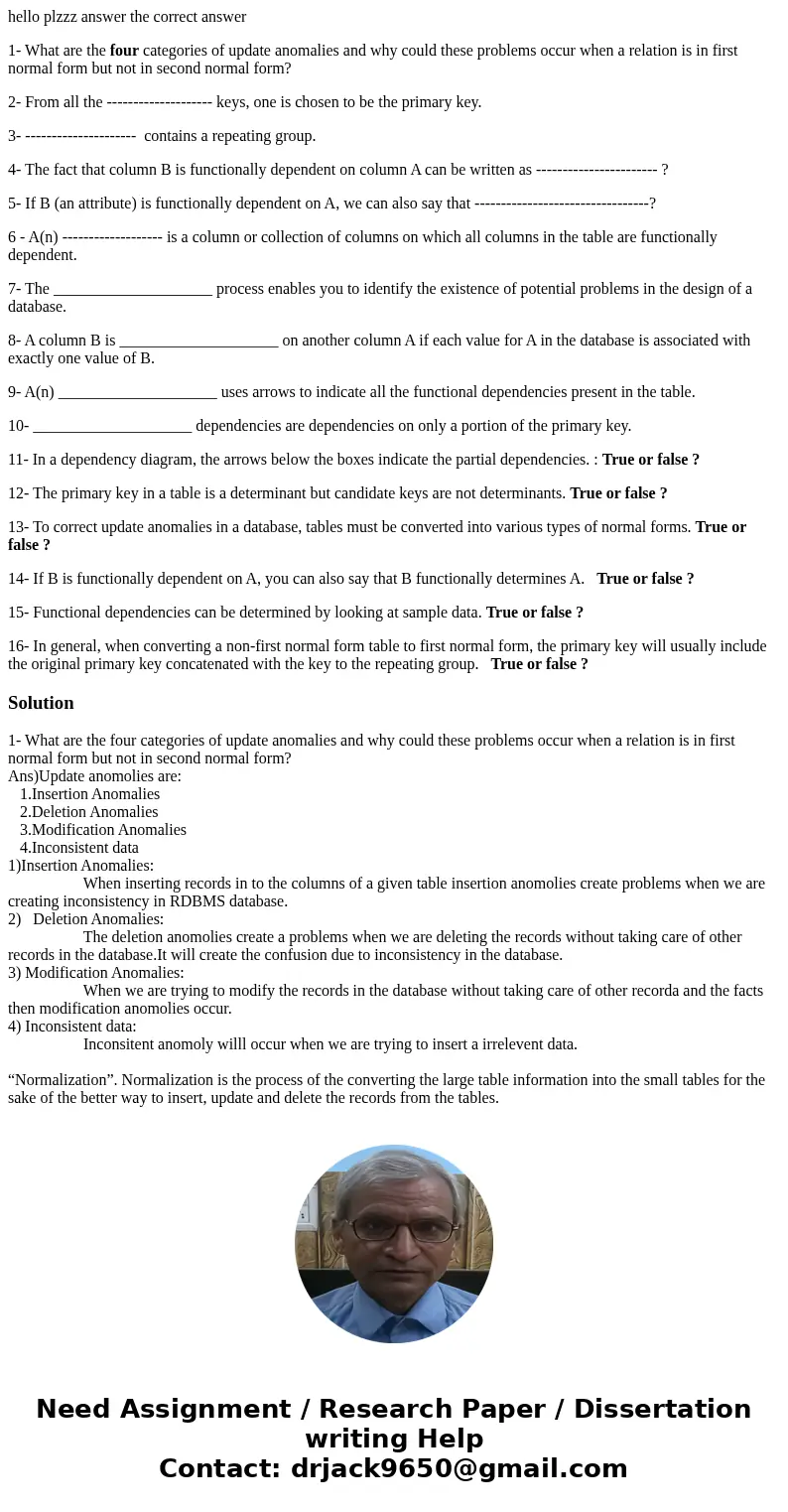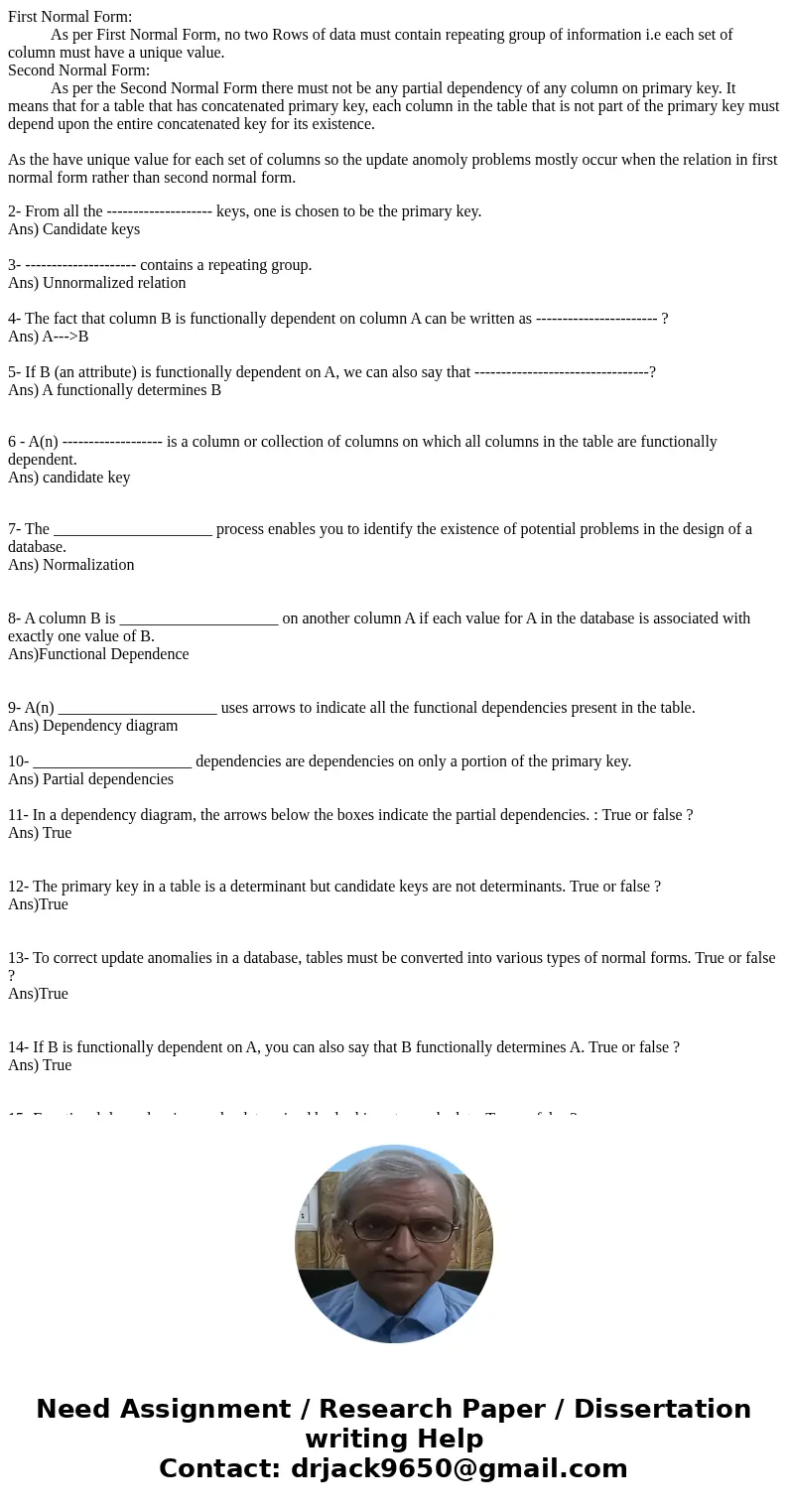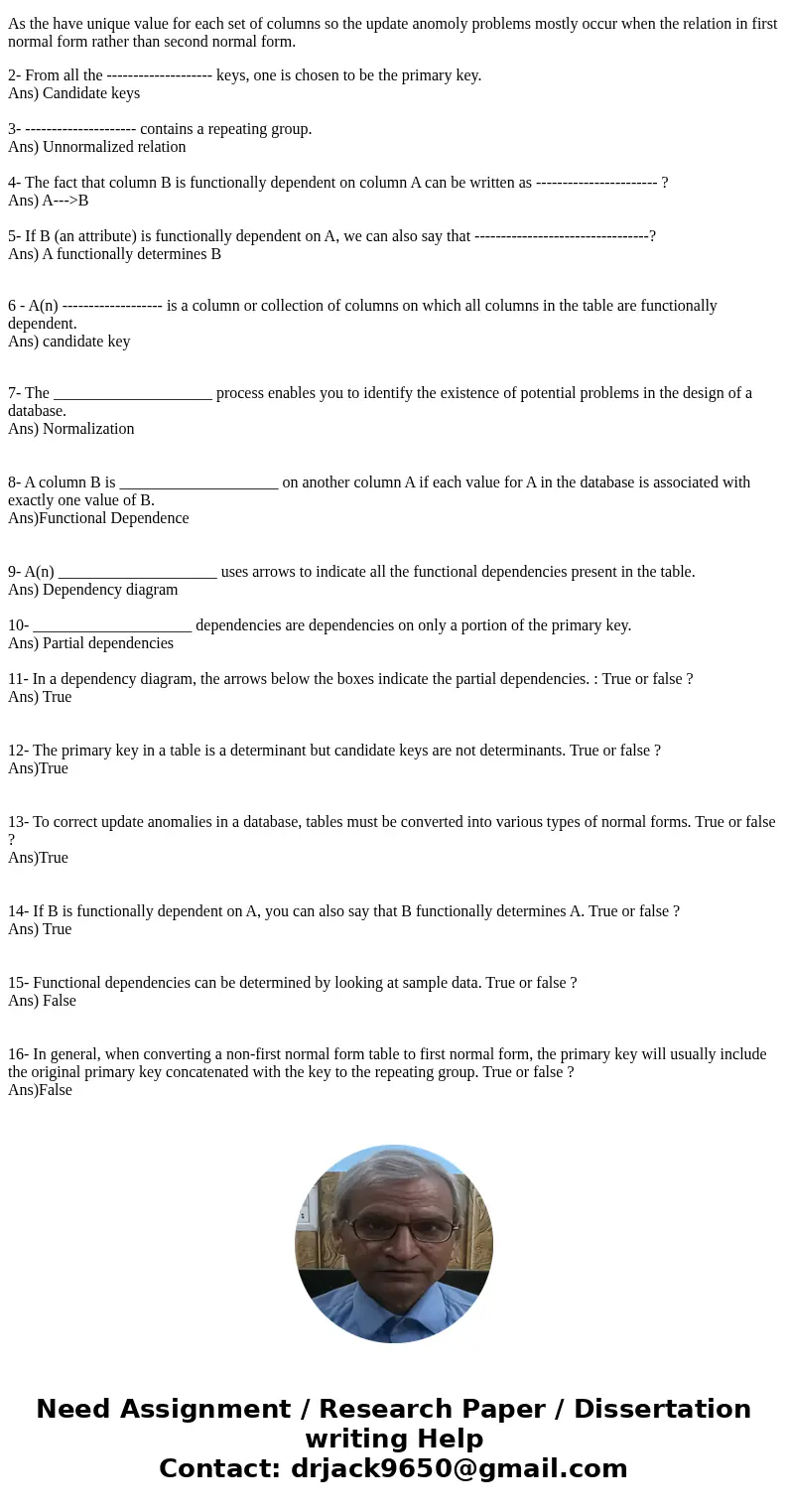hello plzzz answer the correct answer 1 What are the four ca
hello plzzz answer the correct answer
1- What are the four categories of update anomalies and why could these problems occur when a relation is in first normal form but not in second normal form?
2- From all the -------------------- keys, one is chosen to be the primary key.
3- --------------------- contains a repeating group.
4- The fact that column B is functionally dependent on column A can be written as ----------------------- ?
5- If B (an attribute) is functionally dependent on A, we can also say that ---------------------------------?
6 - A(n) ------------------- is a column or collection of columns on which all columns in the table are functionally dependent.
7- The ____________________ process enables you to identify the existence of potential problems in the design of a database.
8- A column B is ____________________ on another column A if each value for A in the database is associated with exactly one value of B.
9- A(n) ____________________ uses arrows to indicate all the functional dependencies present in the table.
10- ____________________ dependencies are dependencies on only a portion of the primary key.
11- In a dependency diagram, the arrows below the boxes indicate the partial dependencies. : True or false ?
12- The primary key in a table is a determinant but candidate keys are not determinants. True or false ?
13- To correct update anomalies in a database, tables must be converted into various types of normal forms. True or false ?
14- If B is functionally dependent on A, you can also say that B functionally determines A. True or false ?
15- Functional dependencies can be determined by looking at sample data. True or false ?
16- In general, when converting a non-first normal form table to first normal form, the primary key will usually include the original primary key concatenated with the key to the repeating group. True or false ?
Solution
1- What are the four categories of update anomalies and why could these problems occur when a relation is in first normal form but not in second normal form?
Ans)Update anomolies are:
1.Insertion Anomalies
2.Deletion Anomalies
3.Modification Anomalies
4.Inconsistent data
1)Insertion Anomalies:
When inserting records in to the columns of a given table insertion anomolies create problems when we are creating inconsistency in RDBMS database.
2) Deletion Anomalies:
The deletion anomolies create a problems when we are deleting the records without taking care of other records in the database.It will create the confusion due to inconsistency in the database.
3) Modification Anomalies:
When we are trying to modify the records in the database without taking care of other recorda and the facts then modification anomolies occur.
4) Inconsistent data:
Inconsitent anomoly willl occur when we are trying to insert a irrelevent data.
“Normalization”. Normalization is the process of the converting the large table information into the small tables for the sake of the better way to insert, update and delete the records from the tables.
First Normal Form:
As per First Normal Form, no two Rows of data must contain repeating group of information i.e each set of column must have a unique value.
Second Normal Form:
As per the Second Normal Form there must not be any partial dependency of any column on primary key. It means that for a table that has concatenated primary key, each column in the table that is not part of the primary key must depend upon the entire concatenated key for its existence.
As the have unique value for each set of columns so the update anomoly problems mostly occur when the relation in first normal form rather than second normal form.
2- From all the -------------------- keys, one is chosen to be the primary key.
Ans) Candidate keys
3- --------------------- contains a repeating group.
Ans) Unnormalized relation
4- The fact that column B is functionally dependent on column A can be written as ----------------------- ?
Ans) A--->B
5- If B (an attribute) is functionally dependent on A, we can also say that ---------------------------------?
Ans) A functionally determines B
6 - A(n) ------------------- is a column or collection of columns on which all columns in the table are functionally dependent.
Ans) candidate key
7- The ____________________ process enables you to identify the existence of potential problems in the design of a database.
Ans) Normalization
8- A column B is ____________________ on another column A if each value for A in the database is associated with exactly one value of B.
Ans)Functional Dependence
9- A(n) ____________________ uses arrows to indicate all the functional dependencies present in the table.
Ans) Dependency diagram
10- ____________________ dependencies are dependencies on only a portion of the primary key.
Ans) Partial dependencies
11- In a dependency diagram, the arrows below the boxes indicate the partial dependencies. : True or false ?
Ans) True
12- The primary key in a table is a determinant but candidate keys are not determinants. True or false ?
Ans)True
13- To correct update anomalies in a database, tables must be converted into various types of normal forms. True or false ?
Ans)True
14- If B is functionally dependent on A, you can also say that B functionally determines A. True or false ?
Ans) True
15- Functional dependencies can be determined by looking at sample data. True or false ?
Ans) False
16- In general, when converting a non-first normal form table to first normal form, the primary key will usually include the original primary key concatenated with the key to the repeating group. True or false ?
Ans)False



 Homework Sourse
Homework Sourse